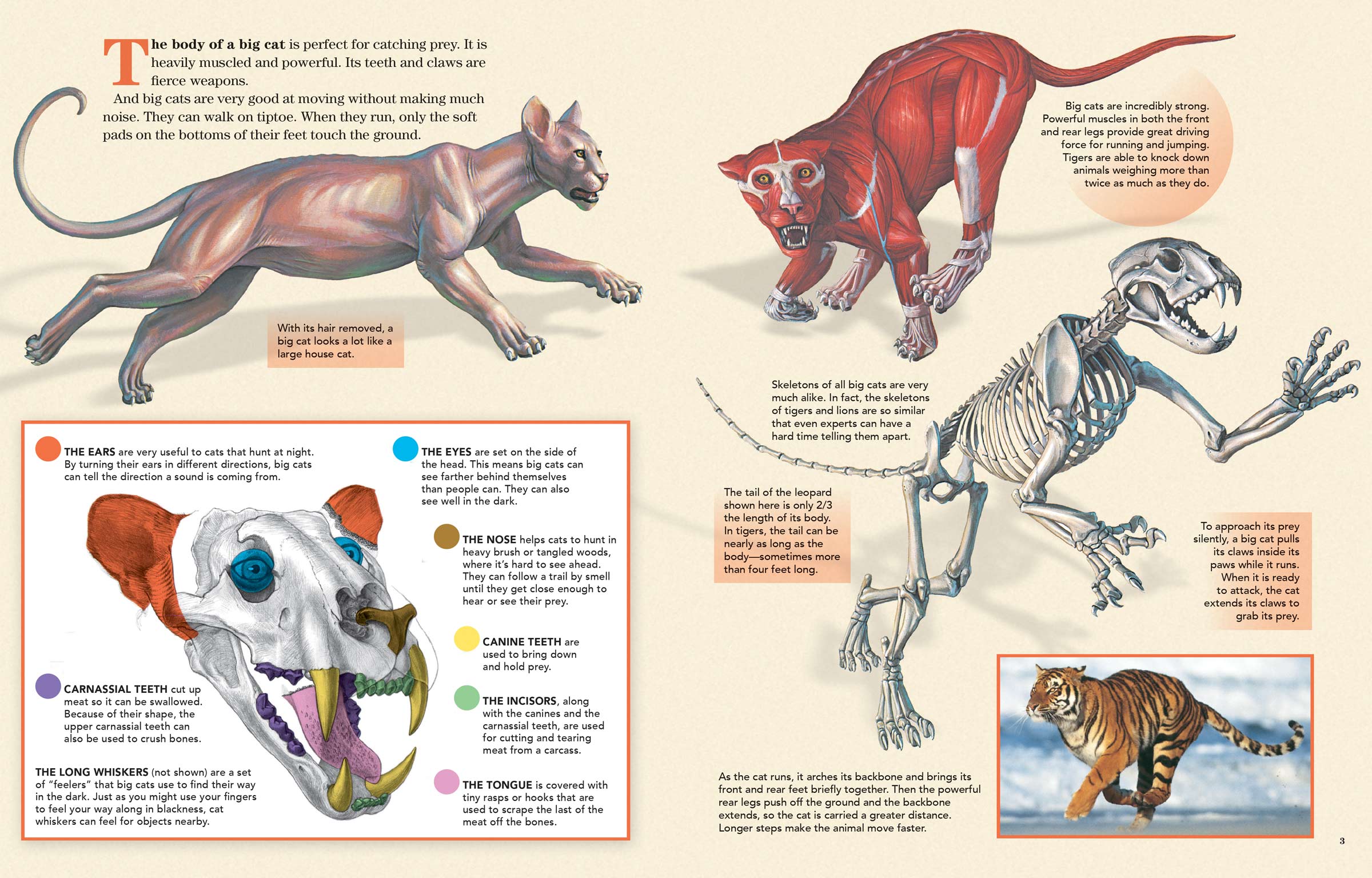
The Body of a Big Cat
ByThe body of a big cat is perfect for catching prey. It is heavily muscled and powerful. Its teeth and claws are fierce weapons.
And big cats are very good at moving without making much noise. They can walk on tiptoe. When they run, only the soft pads on the bottoms of their feet touch the ground.
With its hair removed, a big cat looks a lot like a large house cat.
THE EARS are very useful to cats that hunt at night. By turning their ears in different directions, big cats can tell the direction a sound is coming from.
CARNASSIAL TEETH cut up meat so it can be swallowed. Because of their shape, they can also be used to crush bones.
THE LONG WHISKERS (not shown) are a set of “feelers” that big cats use to find their way in the dark. Just as you might use your fingers to feel your way along in blackness, cat whiskers can feel for objects nearby.
THE EYES are set on the side of the head. This means big cats can see farther behind themselves than people can. They can also see well in the dark.
THE NOSE helps cats to hunt in heavy brush or tangled woods, where it’s hard to see ahead. They can follow a trail by smell until they get close enough to hear or see their prey.
CANINE TEETH are used to bring down and hold prey.
THE INCISORS, along with the canines and the carnassial teeth, are used for cutting and tearing meat.
THE TONGUE is covered with tiny rasps or hooks that are used to scrape the last of the meat off the bones.
Big cats are incredibly strong. Powerful muscles in both the front and rear legs provide great driving force for running and jumping. Tigers are able to knock down animals weighing more than twice as much as they do.
 Skeletons of all big cats are very much alike. In fact, the skeletons of tigers and lions are so similar that even experts can have a hard time telling them apart.
Skeletons of all big cats are very much alike. In fact, the skeletons of tigers and lions are so similar that even experts can have a hard time telling them apart.
The tail of the leopard shown here is only 2/3 the length of its body. In tigers, the tail can be nearly as long as the body—sometimes more than four feet long.
To approach its prey silently, a big cat pulls its claws inside its paws while it runs. When it is ready to attack, the cat extends its claws to grab its prey.
As the cat runs, it arches its backbone and brings its front and rear feet briefly together. Then the powerful rear legs push off the ground and the backbone extends, so the cat is carried a greater distance. Longer steps make the animal move faster.

